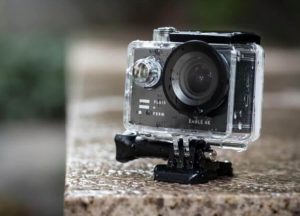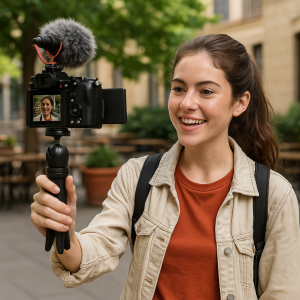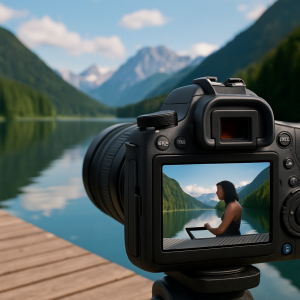Canon EOS R50 V vs Sony ZV‑E10 II: Best Entry-Level Interchangeable Lens Vlogging Camera
🗓️ Why This Comparison Matters Now
Both cameras were launched in Q2 2025, targeting beginner to intermediate content creators. The Canon EOS R50 V, announced March 26, brings vertical video features and streamlined audio tools, while the Sony ZV‑E10 II, announced May 15, updates its predecessor with internal 10‑bit video, better slow‑motion support, and enhanced autofocus—all at a highly competitive price.
These are two of the most current and creator-focused ILC cameras in the sub-$1,000 tier, making this the perfect time for a direct head-to-head breakdown.
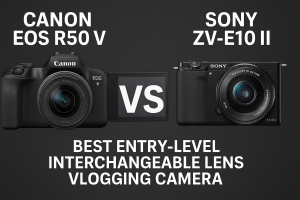
🎥 Vlogging-Specific Features
| Feature | Canon EOS R50 V | Sony ZV‑E10 II |
|---|---|---|
| Vertical tally lamp | ✅ | ✅ |
| Product Showcase mode | ❌ | ✅ |
| Dedicated vlogging mode | ✅ | ✅ |
| Hotshoe with digital audio | ✅ | ✅ |
| Flip screen | ✅ | ✅ |
Verdict: Sony wins for quick studio shoots thanks to Product Showcase, but Canon is better for native vertical workflows and cleaner UI.
🎩 Video Specs
| Spec | R50 V | ZV‑E10 II |
|---|---|---|
| Max resolution | 4K 30p (10-bit) | 4K 60p (10-bit) |
| Slow motion | 1080p 120fps | 4K 120p (cropped) |
| Internal 10‑bit | ✅ | ✅ |
| Overheat limit | ~40 mins | ~60+ mins |
Verdict: Sony pulls ahead with 4K 60p and 120p options for slow motion, giving creators more flexibility for dynamic content.
🔍 Autofocus and Ergonomics
| Category | R50 V | ZV‑E10 II |
|---|---|---|
| Autofocus type | Dual Pixel AF II | Real-time tracking AF |
| Face/eye tracking | Excellent | Excellent |
| Grip/ergonomics | Small grip, lighter | Improved grip over V1 |
| Button layout | Streamlined | Customizable |
Verdict: Both offer superb autofocus, but Sony’s grip and customizable controls are better for handheld shooting.
🔀 Lens Ecosystem and Accessories
| Brand | Canon (RF-S) | Sony (E-Mount) |
|---|---|---|
| Lens variety | Limited native RF-S primes | Extensive APS-C lenses available |
| Adapter flexibility | Limited | High (many third-party options) |
Verdict: Sony offers a significantly better ecosystem for interchangeable lenses and third-party gear.
🌐 Real-World Use Scenarios
Talking-head YouTube Setup
- Canon R50 V: Excellent skin tones, clean UI, slightly simpler audio setup via Canon’s multifunction shoe.
- Sony ZV‑E10 II: Better background blur with available lenses, product showcase mode is a plus for tech channels.
Run-and-Gun Vlogging Outdoors
- Canon R50 V: Compact and lightweight but shorter battery life.
- Sony ZV‑E10 II: Better stabilization, grip, and overheat protection. Easier to carry all day with accessories.
Live Streaming on the Go
- Canon R50 V: Supports USB-C live streaming with minimal setup.
- Sony ZV‑E10 II: UVC/UAC support and livestream overlays via Imaging Edge app add flexibility.
📀 Storage, File Formats, & Workflow
- File sizes: Sony’s 4K 60p and 120p 10-bit files are significantly larger than Canon’s 4K 30p, but offer higher post-production flexibility.
- Recording options: ZV-E10 II supports proxy recording for faster editing; Canon lacks this feature.
- Codec compatibility: Sony supports XAVC HS and XAVC S-I, more suited for professional editing software. Canon records in more compressed MP4.
Verdict: Sony is clearly better for creators with heavier editing workflows, while Canon is great for quick turnarounds.
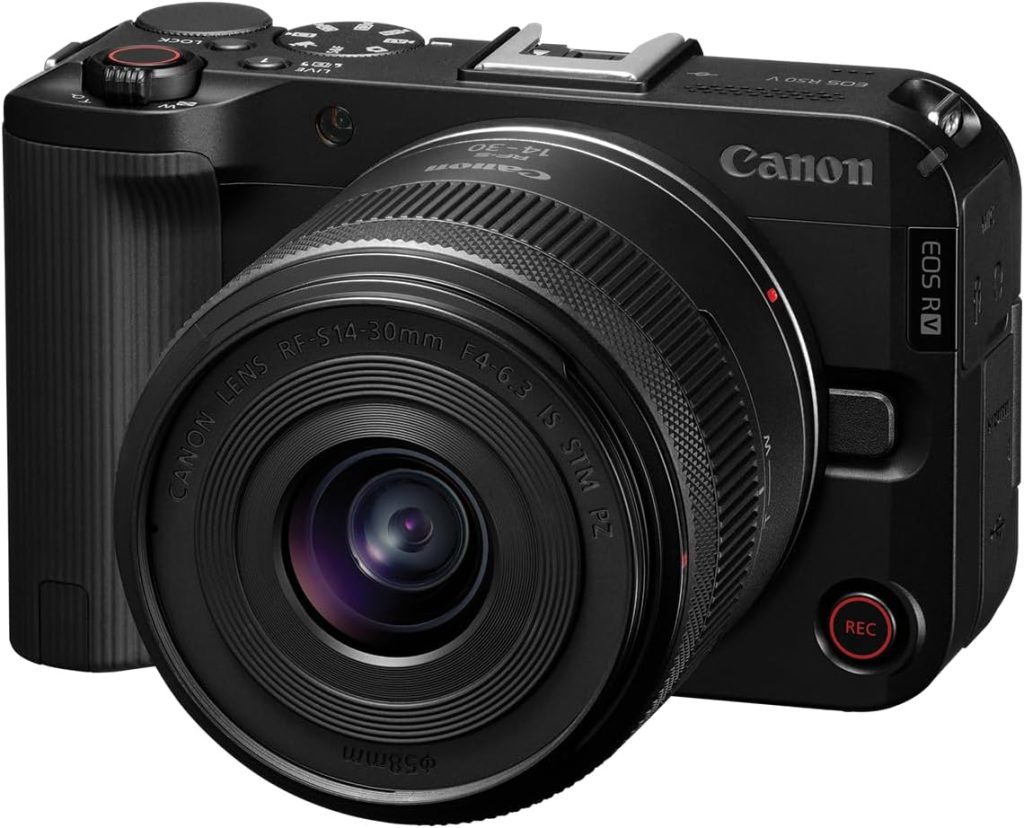
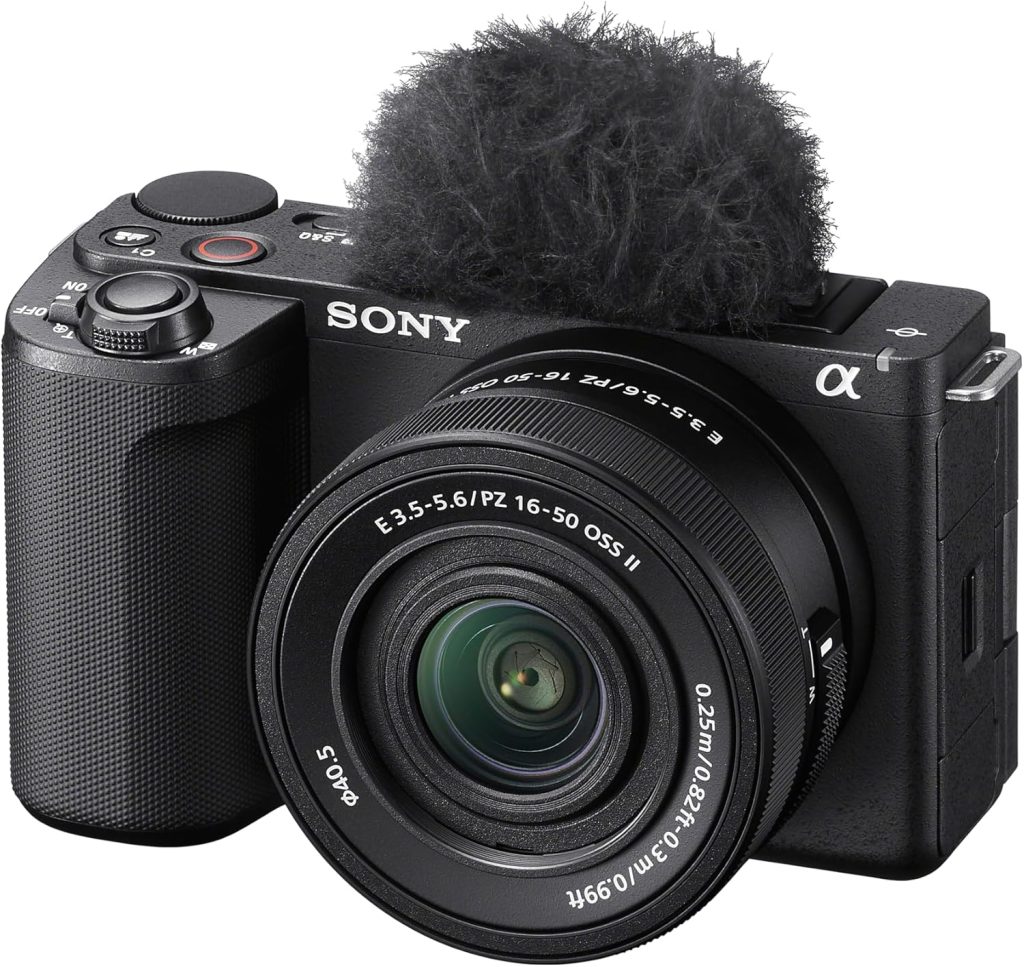
📊 Final Verdict
- Choose Canon EOS R50 V if you want a beginner-friendly system with excellent vertical video tools and streamlined controls. Perfect for short-form creators and vloggers new to ILCs.
- Choose Sony ZV‑E10 II if you need more advanced video specs (4K 60/120p), better lens options, and a mature platform for long-term growth.
🤔 FAQ
Q: Can both cameras stream via USB-C?
✅ Yes, both support UVC/UAC for plug-and-play streaming.
Q: Which one has better battery life?
🔋 Sony has a slight edge, especially with power-efficient standby and external power options.
Q: Is either better for handheld walk-and-talk vlogs?
📸 Sony’s improved grip and electronic stabilization offer a smoother experience.
📎 Where to Buy
Canon EOS R50 V
👉 Buy on Amazon
Sony ZV-E10 II
👉 Buy on Amazon


